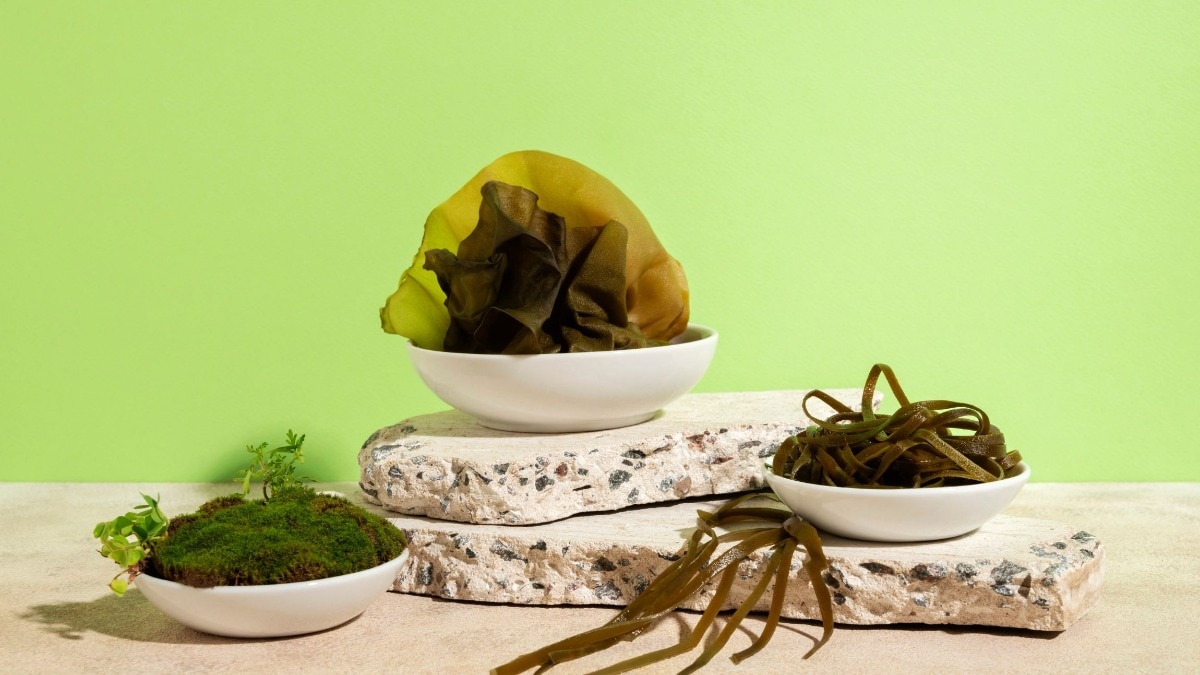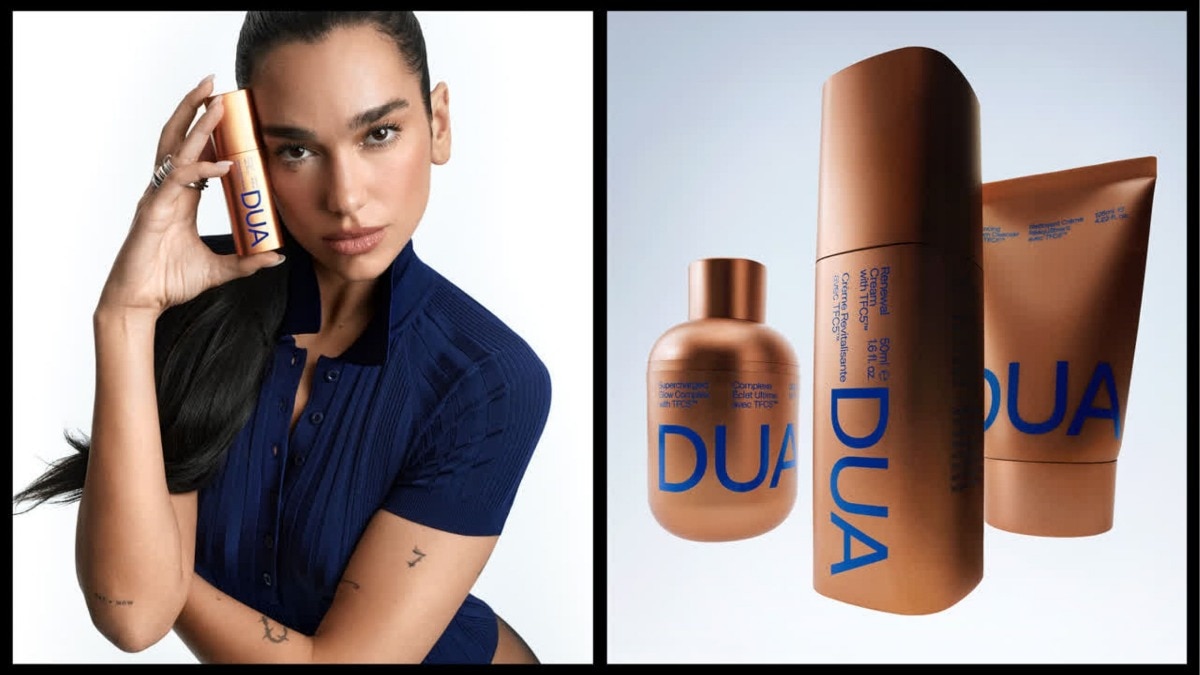Sea moss is everywhere, but should it be in your wellness routine, too?
The ingredient is trending, but is it healing your body or just your Instagram feed?


The gelatinous red algae that thrived along Atlantic coastlines for millennia are now thriving in a different ecosystem entirely: the beauty counter. Sea moss has gone from a traditional folk remedy to an Instagram-worthy gel, appearing in everything from luxury face masks to premium smoothie blends. This marine ingredient has evolved from humble seaweed to a wellness-world darling, appearing everywhere and promising a range of benefits.
But this didn’t just happen overnight. For centuries, coastal communities trusted sea moss to soothe coughs, calm inflammation, and boost immunity. Now? It’s your favourite influencer’s new obsession—and possibly your dermatologist’s side-eye.
So what’s really going on here? Is sea moss the skincare superfood it claims to be, or are we just slathering seaweed on our faces because our social media told us to? Does it actually do anything for your gut, your glow, your morning mood, or are we pinning miracle status on something ancient, misunderstood, and maybe just a little overhyped?
Ancient Wisdom Meets Modern Wellness: The Cultural Context
To understand sea moss’s current moment, you have to appreciate its deep cultural roots. During the Great Famine in the mid-19th century, seaweed served as a crucial source of nutrition for the Irish. The algae were harvested from the rocky coastline and added to soups and broths for their mineral content. That legacy adds weight to its modern-day popularity—we're not just following a trend but engaging in a tradition of resilience and resourcefulness.
In the Caribbean, sea moss holds equally profound significance. Across the islands, it’s long been used as both nourishment and a natural remedy. Often prepared as a strengthening drink believed to boost vitality and virility, it’s woven into the region’s traditional medicine practices. And perhaps the best part? Sea moss is remarkably accessible. You don’t need a lab or a fancy wellness setup—just some dried moss, clean water, and a blender. It's one of the few superfoods you can prep in your kitchen.
Why Sea Moss is Having Its Moment
The sea moss boom started where most beauty trends begin these days: TikTok. Bella Hadid shared her morning routine featuring sea moss gel, and suddenly everyone wanted to know what that translucent substance was. Kim Kardashian revealed she'd been using it for years, Winnie Harlow launched an Erewhon smoothie with it, and the ingredient moved from niche health food stores to mainstream consciousness practically overnight.
But celebrity endorsement alone doesn't explain the staying power. We're living through what cultural observers call the "ancestral beauty movement"—a conscious return to traditional practices after decades of synthetic solutions. Sea moss fits the current clean beauty obsession perfectly—it's minimally processed, naturally occurring, and promises multiple benefits from a single ingredient. Plus, it taps into our fascination with ancient remedies that have been "discovered" by modern wellness culture.
“The appeal lies in its nutrient density,” says Dr Geetika Mittal Gupta, founder and aesthetician at ISAAC Luxe. “Sea moss contains vitamin B2, iodine, potassium, calcium, magnesium, and zinc. These minerals give it anti-inflammatory and skin-hydrating properties, which may help reduce irritation and improve the moisture barrier.”
The numbers, too, shimmer with promise. In 2023, the global sea moss market was valued at a cool $2.58 billion, with projections drifting toward the $3 billion mark by decade’s end. Holland & Barrett recorded a 158% spike in searches, an unmistakable sign that this isn’t just another algorithm-fueled fling, but a deeper shift in what we crave from beauty and wellness.
Sea moss promises to work from the inside out, supporting overall wellness rather than targeting specific concerns. It's the kind of holistic approach that resonates with current beauty thinking.
What Makes Sea Moss the Ocean's Gift to Beauty
In the taxonomy of marine botanicals, few ingredients possess the elegant complexity of sea moss. Scientifically known as Chondrus crispus, or Irish moss, this red algae exists as both a humble survivor and a sophisticated beauty ingredient.
The secret lies in its remarkable molecular architecture. Sea moss is also rich in antioxidant vitamins A, C, and E, as well as amino acids that support collagen production—a combination that reads like a luxury serum's ingredient list, yet exists in this single, unprocessed form.
It contains over 90 minerals and vitamins, creating what nutritionists describe as one of nature’s most complete nutrient profiles. “Sea moss is especially beneficial for thyroid and gut health,” says Lovneet Batra, clinical and sports nutritionist. “It’s rich in iodine, selenium, zinc, and as a prebiotic, it helps balance dysbiosis and lower inflammation in the gut.”
The beauty industry's fascination with sea moss also stems from its versatility. Walk into any well-stocked wellness aisle today, and sea moss will greet you in many forms—slick gel in glass jars, soft capsules in matte packaging, dried seaweed in kraft pouches. Once the domain of niche herbalists and coastal communities, it’s now firmly part of the beauty-wellness crossover space, appealing to both the smoothie-blending minimalist and the maximalist masking on Sunday nights.
Separating Fact from Fiction: The Science Behind the Hype
While sea moss's nutritional profile is impressive, the reality of its bioavailability and efficacy is more complex than marketing materials suggest. For one, iodine. “While sea moss supports thyroid function in iodine-deficient individuals, it’s not for everyone,” says Atul Rajani, founder of Be. “Excess iodine can cause thyroid dysfunction—both hyper and hypo. People with hyperthyroidism, those pregnant or breastfeeding, or anyone on blood thinners should use it with caution.” Dr Gupta adds, “Even natural supplements need supervision. Your personal health history should guide whether it’s right for you.”
Then there’s quality control. Because sea moss absorbs minerals from its environment, it’s especially prone to heavy metal contamination. “Unregulated products can carry harmful levels of arsenic or lead,” Batra notes. “That’s why it should never be self-prescribed.”
Sea moss is full of antioxidants and polyphenols, which are compounds that help protect us from disease-causing oxidative damage, but the concentration of these compounds can vary dramatically based on harvesting conditions, processing methods, and storage. A jar of sea moss gel purchased online may contain significantly different levels of active compounds than one prepared fresh from high-quality, tested algae.
So what should you look for? “Choose wild-harvested sea moss from clean waters like St. Lucia or Ireland,” says Rajani. “Check for third-party lab testing, avoid artificial additives, and make sure iodine content is clearly listed.”
Gut, Skin, or Superficial? What Sea Moss Actually Does
This superfood works best when paired with a lifestyle that allows it to work. You can’t out-supplement poor sleep or a junk-filled diet. It won’t cancel out stress-induced breakouts or fix your gut overnight.
Despite the glossy marketing, most experts agree that the benefits are gradual, not instant. “Sea moss helps with hydration, gut bacteria, and skin elasticity,” says Dr Gupta. “But it’s not magic. With consistent use—one to two tablespoons of gel a day—you may start noticing changes in three to six weeks.”
It may improve digestion, thanks to its prebiotic fibre, and may support clearer skin due to its sulphur content. And yes, it may help with immunity and energy owing to its vitamin and amino acid profile. But so can many other superfoods.
“Each has its own superpower,” says Rajani. “Sea moss is about mineral replenishment. Spirulina’s great for protein and detox. Ashwagandha helps with stress and hormones. You don’t need to choose—just use them purposefully and in combination, based on what your body needs.”
Still, the internet’s obsession with sea moss has triggered a wave of “miracle” claims, many of which oversell what this algae can realistically do. One area where it may genuinely shine is skin support from both inside and out. The sulphur compounds in sea moss may help reduce acne-causing bacteria, while its hydrating mucilage can soothe irritated or dry skin when applied topically. But again, results are subtle, not cinematic. You’re not waking up with glass skin after one face mask.
What it really comes down to is intention. Sea moss isn’t a miracle. It’s a mineral-rich plant that plays a supporting role in a bigger story: your habits, your health, and your willingness to be patient with both.
Should Sea Moss Earn a Place in Your Routine?
The answer depends on your body, your lifestyle, and your level of curiosity (or commitment).
For starters, it’s not for everyone. “If you have thyroid issues, are pregnant, or on medication, definitely consult a doctor first,” says Lovneet. “It’s powerful, and that’s exactly why it can cause harm when overused.” The high iodine content that makes sea moss powerful can also make it problematic, especially when paired with thyroid medication or pre-existing conditions.
Then there’s the practicality. Sea moss isn’t a grab-and-go supplement. Turning it into a gel takes time and consistency—it’s better suited for those already leaning into whole foods, slow beauty, and daily rituals.
More importantly, sea moss should never replace the foundations of wellness. Think of it as a booster, not a miracle. It works best alongside SPF, balanced meals, movement, hydration, and actual medical advice.
The ocean has offered us many gifts throughout human history, and sea moss represents one of its more generous offerings. Whether it belongs in your wellness routine depends not on the promises of influencers or the claims of marketers, but on your individual needs, goals, and willingness to embrace both its benefits and its limitations.
Lead image: Freepik
Also read: Six sleep-inducing therapies to try across Mumbai, Delhi, Bengaluru, and Chennai










